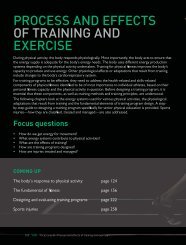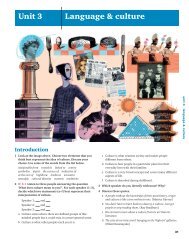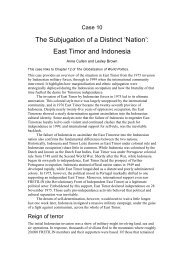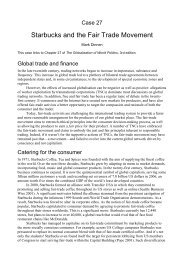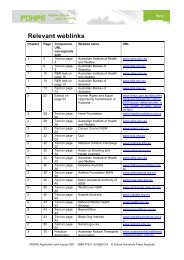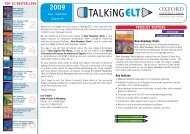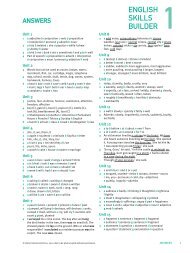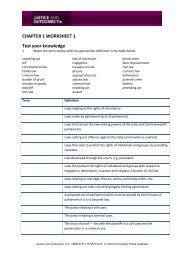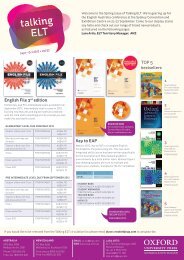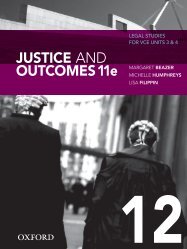did you know?
did you know?
did you know?
Create successful ePaper yourself
Turn your PDF publications into a flip-book with our unique Google optimized e-Paper software.
eception and absolute<br />
threshold<br />
The second important element in the eye detecting the light stimulus is that<br />
the light energy that falls within the visible light spectrum must be intense<br />
enough for the human eye to see. In other words, it must reach absolute<br />
threshold. The absolute threshold is the minimum amount of light energy<br />
needed for an observer to perceive a stimulus, in ideal conditions, 50 per cent<br />
of the time.<br />
One method psychologists use to measure absolute threshold is by<br />
presenting light stimuli at different intensities to see what level of intensity<br />
is needed for a person to detect the light. If that person detects it during the<br />
experiment about 50 per cent of the time at a particular intensity (the point<br />
at which they actually perceive it), then absolute threshold has been reached.<br />
Absolute threshold for the senses are:<br />
> Hearing: ticking of a watch six metres away.<br />
> Smell: one drop of perfume in a large house.<br />
> Taste: one teaspoon of sugar dissolved in 10 litres of water.<br />
> Touch: the wing of a fly falling on the cheek from a height<br />
of one centimetre.<br />
> Vision: the flame of a candle 50 kilometres away on a dark, clear night.<br />
These are based on sound scientific research but may not be the same for<br />
everyone and can vary depending on a range of environmental factors (noise,<br />
amount of light) and psychological factors (fatigue, motivation, stress,<br />
expectations). For example, if a person has had someone break into their<br />
house, they will be more highly attuned to sounds at night, and this may<br />
affect their usual absolute threshold for sound.<br />
the role of the eye in visual<br />
perception<br />
As already mentioned, light enters the eye through the cornea, a tough<br />
transparent tissue covering the front of the eye. It then passes through the<br />
pupil, the hole in the middle of the iris. The lens then focuses the light onto<br />
the retina, which contains photoreceptors (light-sensitive cells).<br />
The retina is nerve tissue that covers more than 50 per cent of the<br />
inner surface of the back of the eye. The retina contains two types of<br />
photoreceptors: rods and cones.<br />
Rods: There are 125 000 000 in each eye.<br />
> They are responsible for vision in low light (that is, they are very<br />
sensitive to light).<br />
> They are responsible for peripheral vision (out of the corner of the eye).<br />
They are concentrated at the edges of the retina.<br />
> They have low visual acuity (they can’t register detail).<br />
> They can register only in black and white.<br />
> They are most sensitive to light of approximately 500 nm wavelength.<br />
fig 6.6>> Your eyes can detect a<br />
candle flame up to 50 km away on a<br />
clear dark night.<br />
fig 6.7>> Your tastebuds can detect one<br />
teaspoon of sugar in 10 litres of water.<br />
115



